25 June 2021
AUTHOR: ROSANNA GALVIN
> BREAKOUT STORY: It’s complicated. Or is it?
Augmented, virtual and mixed reality, along with wearable technology, are changing how we live and work. What’s next?

Twenty years ago, Professor Bruce Thomas met a young girl with extensive burns at Adelaide’s Women’s and Children’s Hospital. Her wound dressings had to be changed twice every day, a necessary but excruciatingly painful process. As part of his research into pain management using virtual reality, Prof Thomas introduced a simple VR game to the girl, who began playing it during her next dressing change. This time, the little girl reported almost no pain – the immersive game had been such a distraction she barely realised the task was completed.
Despite a long list of accolades in a career that has seen Prof Thomas become an internationally recognised scientist in the field of wearable technology, it is this achievement – witnessing firsthand how technology has the power to make lives better – that he recalls when he reflects on his work.
Today Prof Thomas is the director of the Australian Research Centre for Interactive and Virtual Environments (IVE) at the University of South Australia, where he oversees a multidisciplinary group of more than 100 researchers working to advance the use of immersive technologies such as augmented, virtual and mixed reality, to improve lives.
Health remains a key area of research for Prof Thomas and his colleagues. He believes immersive technology will continue to play a transformative role in future health and medical settings, from improving the patient experience in hospital, to providing better care to people in remote communities.
“Immersive technology is a powerful tool capable of altering and improving our reality,” Prof Thomas says.
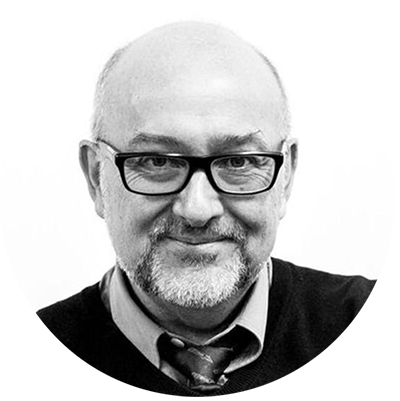
“One of the key projects being led by my colleague Professor Ian Gwilt [pictured], is working in hospitals to see how we might be able to better inform a patient of what’s going to happen to them during their stay.
“If you’re going in for surgery for the first time, there’s a lot of stuff that's going to happen that you have no idea about. You’re going to be wheeled around to different places, see different types of machines, meet different specialists – and you’ll be disoriented while a lot of this is happening.
“Ian is investigating how virtual reality can give patients information about their hospital stay before it happens, to improve their overall experience. Virtual reality can illustrate what’s going to happen and why. This takes the fear of the unknown out of the equation and ultimately provides a safer and more positive experience for patients in hospitals, which I think we all know can be an incredibly challenging time in someone’s life.”
It is this concept of using the virtual to make the real world better that is at the heart of IVE. One of the largest centres of its kind in Australia with connections around the world – including an ongoing collaboration with the Massachusetts Institute of Technology and several industry partnerships – IVE is where next-generation immersive technology is being developed and applied to solve real-life challenges.

Just around the corner from IVE is UniSA’s Future Industries Institute, where physical chemist Associate Professor Craig Priest oversees the South Australian Node of the Australian National Fabrication Facility, established to provide access to micro and nanofabrication equipment to advance the country’s scientific research.
Like Prof Thomas, Assoc Prof Priest’s research aims to create technology that transforms lives – but he’s in the business of making tiny devices with big impact. He is currently partnering with NASA to explore how these microfluidic devices might be used to monitor astronauts’ health.
Assoc Prof Priest says the goal of the project is to put a ‘laboratory on a chip’, creating a device that only requires the input of a small amount of bodily fluid, such as sweat or saliva, to paint an accurate picture of an astronaut’s overall health.
“We need to be able to effectively take everything from a clinical lab into space so we’re working on getting as much as we can from a lab onto a single small device that's portable and potentially wearable,” he says.
“These microfluidic devices avoid the need for needles or taking blood. They use non-invasive sensors that use bodily fluid to help us understand an astronaut’s health by providing analytics on chemical imbalances, metabolic disorders and stress levels.
“We're targeting space but if this works up there, it may work for other remote places too.”
Back on Earth, wearable devices are no longer the stuff of science fiction – they’re a wardrobe staple for many. According to international IT research and advisory group Gartner, spending on wearable devices will total A$105.3 billion this year, an 18.1 per cent increase from A$89.2 billion in 2020.
While Assoc Prof Priest acknowledges that the technology he is developing could one day find a home on a Fitbit or Apple smartwatch, he says there is still a way to go before the microfluidic sensors make their way to Mars.
“We're developing the technologies and materials – and studying the fundamental behaviour – that will underpin these future applications but there is much to learn,” he says.
Assoc Prof Priest says developing the technologies is only part of the work. Before widespread use, researchers ideally need to explore the meaning of the data collected, the application of the devices, and the implications for the user – complex work in itself, and sometimes missing from the conversation.
“One of the things that doesn’t get talked about as much is the flip side of knowing so much about your health,” he says.
“Ignorance could be bliss. There are huge advantages for early detection or diagnosis when we can medically respond to it. But what about health conditions we don’t understand or can’t easily treat?”
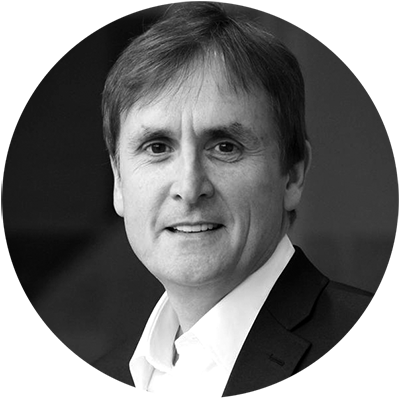
How society adapts to these rapid advances in technology and the emerging ethical and moral questions that arise is central to UniSA sociologist Professor Anthony Elliott’s work. As Dean of External Engagement and Executive Director of the Hawke EU Jean Monnet Centre of Excellence, Prof Elliott works with researchers from around the world to grapple with the ramifications of a digital world increasingly powered by artificial intelligence.
Prof Elliott is quick to recognise the technical challenges faced by researchers such as Prof Thomas and Assoc Prof Priest, who are at the forefront of transformative technology development. But he believes the biggest challenge will be the users themselves and how they adjust to the increasingly invasive and complex technology on the market.
“The world is undergoing what I term a ‘technological tsunami’ – and the consequences are unparalleled,” he says.
“As Lord Anthony Giddens – who sat as a member of the United Kingdom’s Parliament’s Review AI in the UK – put it: ‘We are now living off the edge of history’.
“Machine learning algorithms are already part of our daily healthcare routines – they send us reminders to schedule an appointment; they track our exercise, sleep and eating habits; they can accurately identify suspect melanomas; monitor energy levels; map fertility statistics; and collate other diagnostic data.
“Talk to engineers and computer scientists and you quickly become aware of the major technical challenges confronting the world of technology, AI and its advancement. Notwithstanding this, my view is that the greatest challenges lie on the side of humans.
“How well we adapt – learn to cope with and confront – the AI revolution is arguably the major question challenging industry, enterprise, politics, policy, culture and society. Living life on ‘autopilot’ is one thing, but trusting the systems of automation – there’s the rub …”
History shows us that technology has always shaped society, changing the way we live, work and play, with ripple effects that inventors could never have foreseen. Just look at the rise of Facebook – technology developed in a student dorm that now infiltrates the lives of millions around the world.
As technology increasingly becomes not only part of our lives but a part of us, perhaps we could all benefit from considering not just the life-changing benefits, but also the unexpected consequences innovation inevitably brings.
Resources
Professor Anthony Elliott expands on this topic in his book, The Culture of AI: Everyday Life and the Digital Revolution. His latest book, Making Sense of AI: Our Algorithmic World, will be released later this year.
It’s complicated. Or is it?
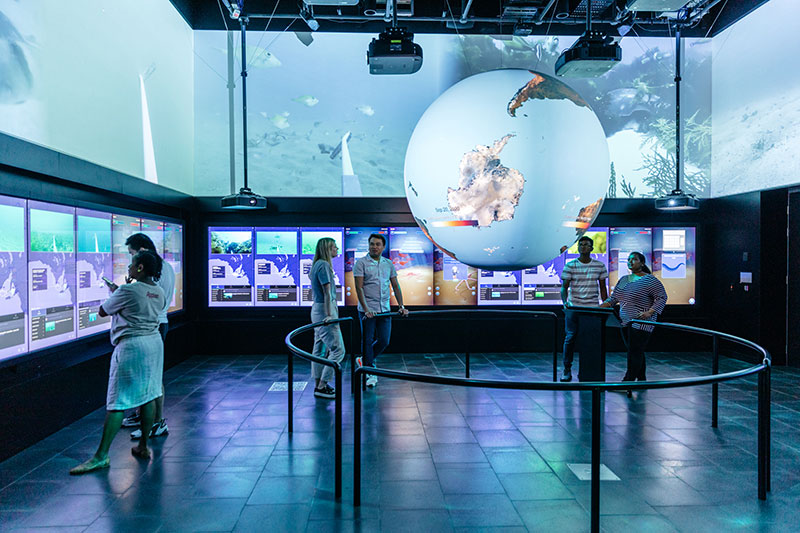
The intricate relationships between humans, nature, and technology is the focus of this year’s exhibition at UniSA’s Museum of Discovery – MOD.
It’s Complicated explores complex systems theory by putting visitors at the heart of a number of complex systems, including entering the body’s immune system through the bloodstream to find out how researchers are harnessing cells to fight cancer.

According to MOD. Director and futurist Dr Kristin Alford, something that’s complicated isn’t always complex.
In complex systems theory, something becomes complex when it meets the following criteria: it changes over time and is sensitive to initial conditions; inputs are not proportional to outputs; and there are many components that interact dynamically.
“Take your mobile phone – it might be complicated, but if you are given enough information, you can understand how it works,” Dr Alford says.
“Our exhibition examines complex systems that are hard, or even impossible, to predict as they change over time, sometimes dramatically, and can lead to something entirely new and different.”
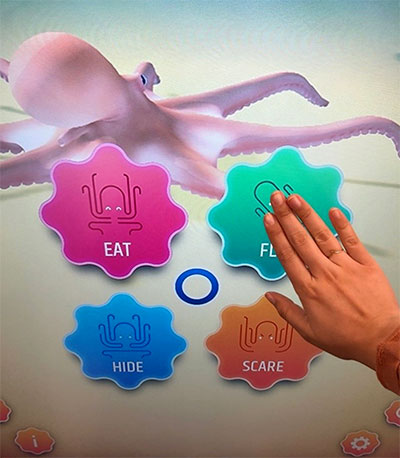
One exhibit – which has been adapted into a Tamagotchi-style app available to download – is Octopus Estate, which allows users to understand complex systems by caring for their very own octopus.
Dr Alford says octopuses are a fascinating example of complex systems as the creatures use adaptations like camouflage, inking, jet propulsion, gene editing, venom, and regeneration to survive, reproduce and thrive.
To explore the complex lives of octopuses yourself, you can download the app for free on Google Play and the Apple Store.
To find out more about the It’s Complicated exhibition and the complex systems featured, go to mod.org.au.
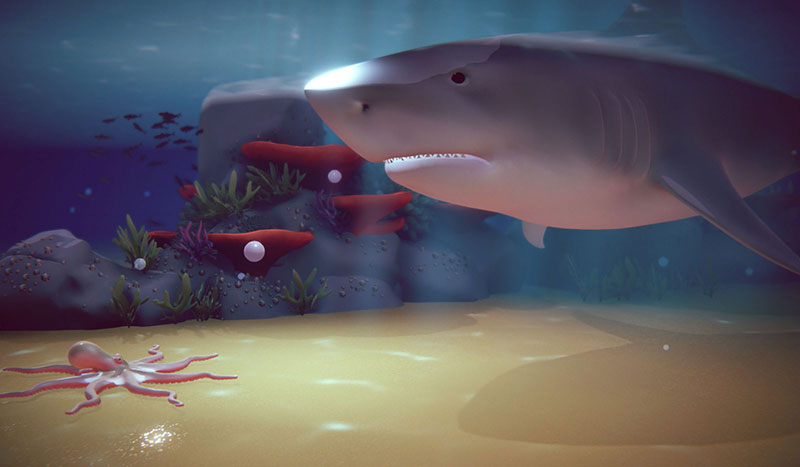 An encounter between an octopus and a shark in the Octopus Estate app.
An encounter between an octopus and a shark in the Octopus Estate app.

Worldwide spending on wearable devices is predicted to reach A$105.3 billion in 2021, an 18.1 per cent increase from A$89.2 billion in 2020, according to the latest forecast from Gartner, Inc. The report attributes the global pandemic, which has seen a rise in remote work and an increased interest in health monitoring, as a significant factor driving market growth.
Conversion rate as at 9 June 2021.
Source: Gartner (January 2021)
You can republish this article for free, online or in print, under a Creative Commons licence, provided you follow our guidelines.


